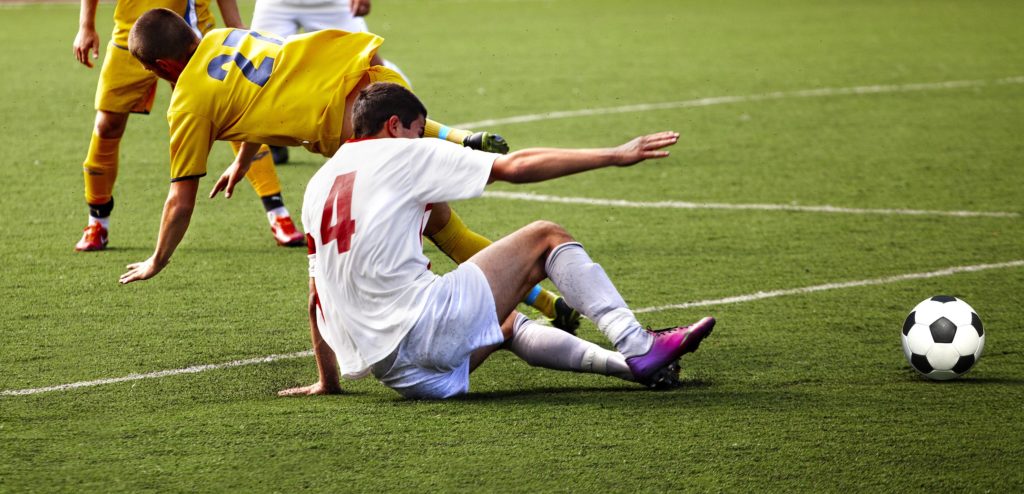The back is one of the major and most important parts of the body. It comprises many muscles and bones that enable people to stand, lift objects, walk, and generally move. The spine is made of vertebrae, which are tiny bones positioned atop each other. These bones are separated by disks, which are composed of soft tissue.
In the lower back, there are five lumbar vertebrae, which are connected by ligaments that offer free movement and flexibility. The vertebrae, muscles, and ligaments of the lower back are where most sports injuries of the back occur. During their sports careers, most athletes will feel some back pain at one time or another.
In fact, according to a 2012 survey done by the Athletic Trainers Association of Rush/Illinois, one of the top athletic injuries among high school sports participants were injuries of the back.
Common Back Injuries for Young Sports Participants
Muscle strains and ligament sprains are among the most common back injuries for young athletes. Such injuries may result from stretching, trauma, overuse, and improper conditioning or mechanics. One factor to be aware of is that some very serious injuries may appear to be strains or sprains.
These injuries include spondylolisthesis and spondylolysis. This is why it is crucial for young athletes to see the right specialists (either orthopedic or sports medicine) when they sustain any injuries that cause persistent discomfort in the lower back.
Spondylolysis is a condition used to describe the condition of a stress fracture of a vertebra. The vertebra that is typically affected is the fourth or fifth one in the lower part of the back. This type of condition generally occurs when too much pressure or stress has been placed on the lower back.
If the stress fracture causes the spine to become too weak, a condition known as spondylolisthesis may manifest. This term is used to describe the occurrence of a vertebra slipping and then shifting from its proper place.
Certain activities and sports may be more likely to lead to such back conditions. These sports include gymnastics, wrestling, diving, and swimming. When considerable force is placed on the lower back, athletes are more susceptible to sustaining back injuries.
Such sports may include skiing, running, baseball, cycling, and football. Additionally, participation in sports that require twisting can also lead to back injuries. These sports include gymnastics, baseball, golf, and tennis.
Symptoms to Look for in Young Athletes
When an injury has been sustained, an athlete will experience lower back pain that increases with movement. The signs of spondylolisthesis and spondylolysis can be very similar to less serious muscle strains. When the athlete arches the back, the pain may radiate across the lower part of the back.
When spondylolisthesis worsens, the vertebra can start to push against the nerves in the area, and the muscles in the area may become stiff. A person may feel pain or numbness in the leg or the foot, which could indicate a lumbar disc issue.
Treating Back Injuries
In general, an individual with back pain should get plenty of rest and avoid being active. Specific treatments usually include anti-inflammatory medicine and ice application. Relief from pain may also be found in heating pad application. Physical therapy may be needed if symptoms remain.
Further treatment options may include massage and electric stimulation. An injured person may also be directed to do certain exercises and stretches that make the back and abdominal muscles stronger.
Sometimes, a brace is required in order to keep the lower back stable when a person has spondylolisthesis or spondylolysis. Surgery could be the only way to correct the problem in a case of extreme spondylolisthesis. If a vertebra cannot be corrected with regular treatment and it continues shifting, surgery may be the only viable option.
Once a vertebra has slipped by more than 50%, a medical professional may recommend that an athlete play a sport that is not as risky for the back.
Any athlete who suffers from this condition should schedule periodic visits with an orthopedic physician, in order to prevent a problematic disc from continuing to slip and cause further issues.


Recent Comments